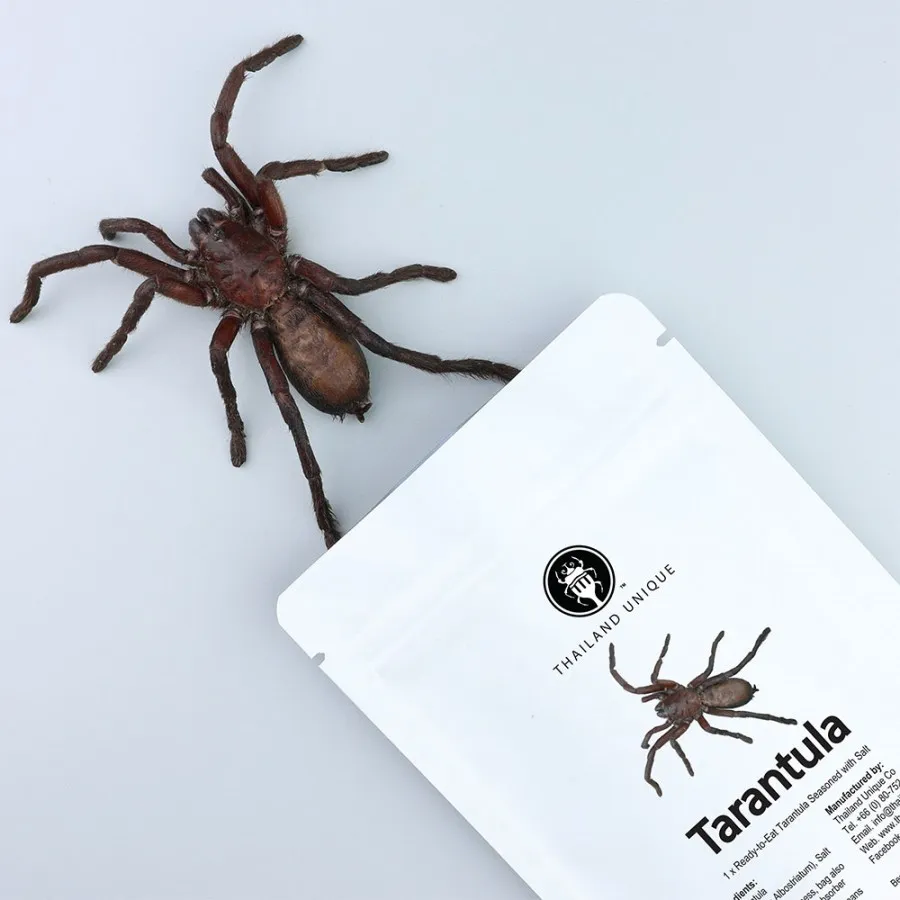What Do Tarantulas Eat?
Tarantulas, those fascinating eight-legged creatures, are primarily carnivores, meaning their diet consists mainly of meat. In the wild, their meals vary depending on their habitat and the availability of prey. This can range from insects to small vertebrates. When it comes to pet tarantulas, understanding their dietary needs is crucial for their health, growth, and overall well-being. Providing a balanced diet is key to ensuring your tarantula thrives in captivity. This article will delve into the best food options for your tarantula, offering insights into what they eat, how often they should be fed, and the importance of hydration.
The Importance of a Proper Tarantula Diet
A well-balanced diet is paramount to a tarantula’s health and longevity. Just like any other animal, tarantulas require specific nutrients to function properly. A poor diet can lead to a multitude of health problems, including stunted growth, weakened immune systems, and a shorter lifespan. Furthermore, the type of food you offer can impact molting, a crucial process for tarantulas. During molting, they shed their exoskeleton to grow larger. A nutritious diet provides the necessary resources for successful molts. Therefore, selecting the right food and understanding feeding frequency are essential aspects of responsible tarantula ownership. Careful attention to your tarantula’s diet is a direct investment in its health and happiness.
5 Top Foods Tarantulas Devour
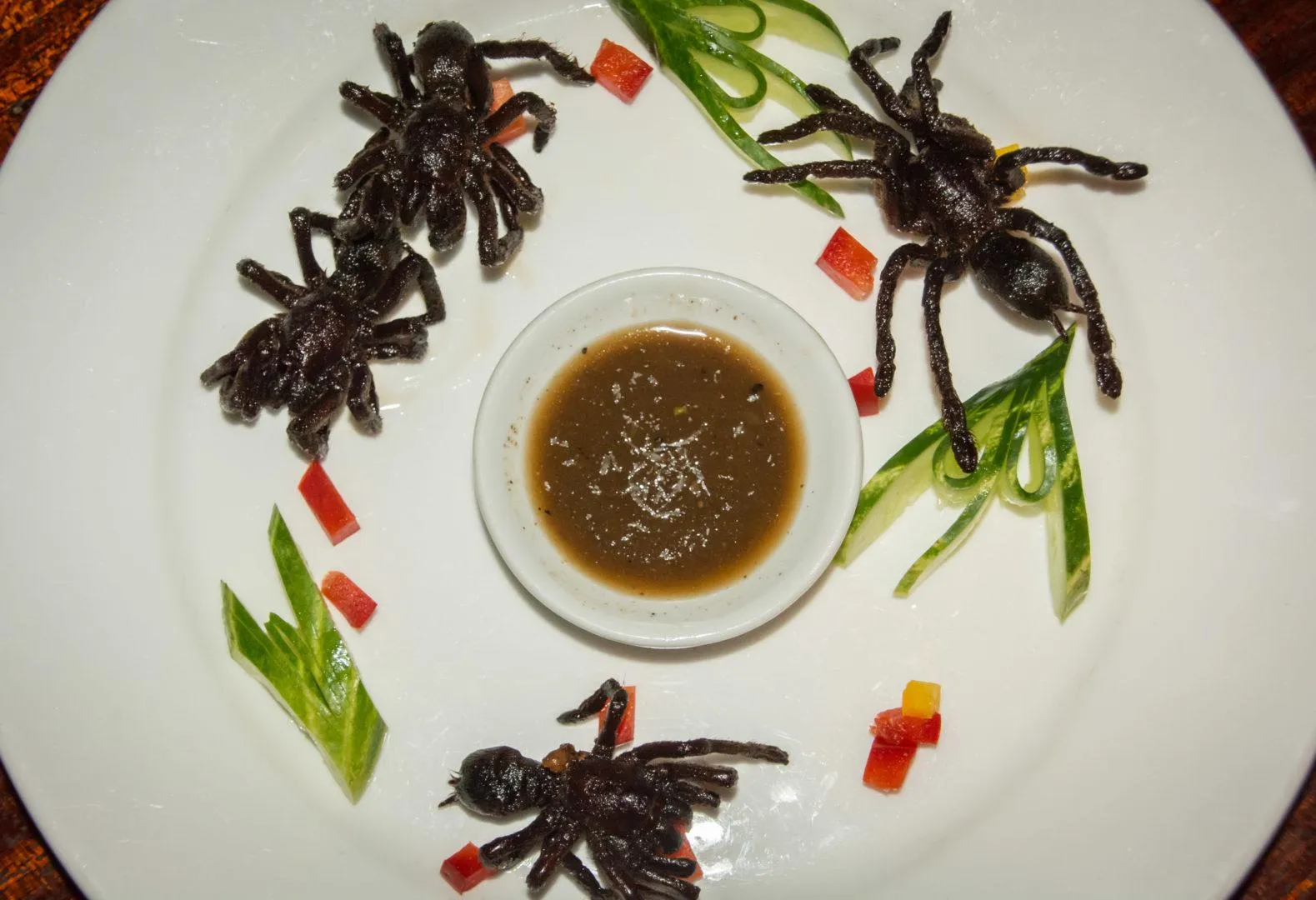
While tarantulas can eat various things, some food options are more nutritious and convenient than others. Here’s a look at the top 5 foods that are generally considered safe and beneficial for your tarantula.
Crickets The Staple of the Tarantula Diet
Crickets are the most common and widely available food source for pet tarantulas. They are relatively easy to obtain from pet stores or online suppliers and provide a good source of protein and other essential nutrients. Crickets come in various sizes, making it easy to find the appropriate size for your tarantula. Before feeding, it’s important to gut-load the crickets, meaning you feed them nutritious food like fruits, vegetables, and commercial cricket feed. This ensures that your tarantula gets the maximum nutritional value from its meal. Always remove uneaten crickets from the enclosure to prevent them from bothering your tarantula.
Ensure that the crickets you’re feeding are free from pesticides or any other harmful chemicals. The health of your tarantula depends on the quality of its food. You can also dust the crickets with calcium and vitamin supplements to further enhance their nutritional value, especially beneficial for juvenile tarantulas. Observe your tarantula’s behavior after feeding to ensure it is digesting the crickets properly. Many tarantula keepers find crickets to be the most convenient and reliable food source for their pets.
Pros and Cons of Feeding Crickets
- Pros: Readily available, relatively inexpensive, good source of protein, easy to gut-load, available in various sizes.
- Cons: Can be noisy, may escape the enclosure, require regular maintenance to keep alive, nutritional value can vary depending on the cricket feed.
Mealworms A Convenient Food Source
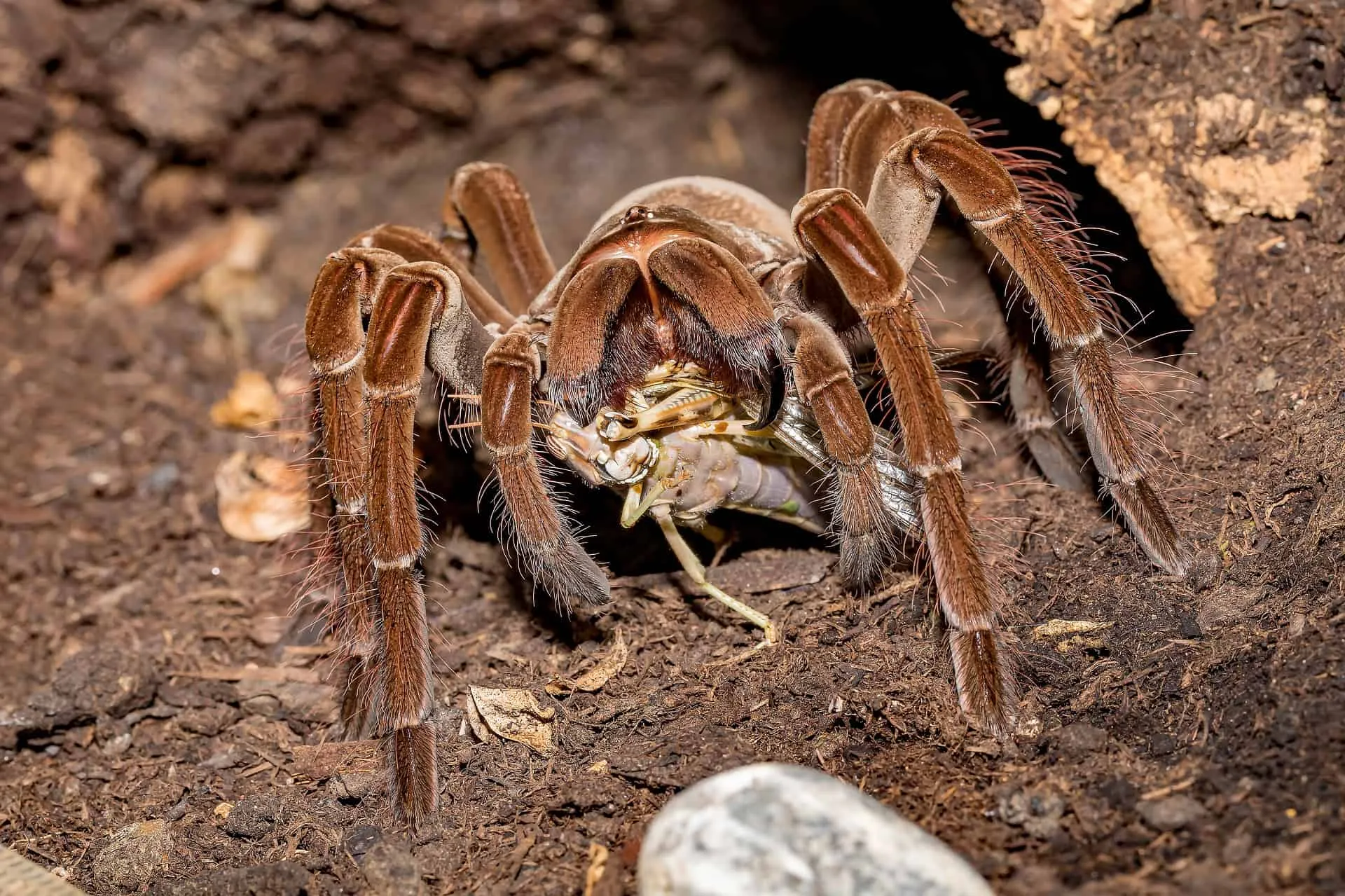
Mealworms are another popular choice for feeding tarantulas. They are easy to store, as they can survive for several weeks with minimal care. They are also less likely to escape compared to crickets. Mealworms offer a decent source of protein, but they are higher in fat than crickets. This means they should be offered in moderation, particularly to adult tarantulas, to prevent excessive weight gain. Like crickets, mealworms can also be dusted with calcium and vitamin supplements to boost their nutritional value. Choose mealworms that are still in the larval stage, as the adult beetles are not suitable as food for tarantulas.
Feeding mealworms can be a good option when you are short on time, or cannot access other food sources. It’s important, however, to monitor the size and number of mealworms you are feeding your tarantula. Overfeeding mealworms can lead to obesity, impacting your tarantula’s health and potentially reducing its lifespan. Ensure you provide your tarantula with varied food choices for a more balanced and fulfilling diet. Also, make sure mealworms are sourced from a reputable supplier to avoid any contamination.
Pros and Cons of Feeding Mealworms
- Pros: Easy to store, less likely to escape, convenient to feed, readily available.
- Cons: Higher in fat, less nutritious than crickets, may burrow, can be less stimulating for the tarantula than live prey.
Cockroaches A Nutritious Choice
Cockroaches, such as Dubia roaches, are an excellent food source for tarantulas. They are packed with nutrients and offer a good protein-to-fat ratio. Many tarantula keepers consider cockroaches a superior food option due to their nutritional profile. They are also less noisy than crickets and are not prone to escaping, making them easy to manage within the enclosure. Dubia roaches, in particular, are popular because they are slow breeders, which reduces the risk of an infestation if any escape. Like crickets, cockroaches should also be gut-loaded before being fed to your tarantula to provide the best nutrition.
When feeding cockroaches, make sure to select the correct size for your tarantula. You should only offer a cockroach that is as big or smaller than the spider’s abdomen. This minimizes stress on your tarantula during the hunt. If you intend to breed cockroaches, they require a separate enclosure, and they will need adequate food and water. Ensure that the cockroaches you are feeding are healthy and free from any diseases or parasites. The use of pesticides or insecticides around your tarantula’s food source should be strictly avoided.
Pros and Cons of Feeding Cockroaches
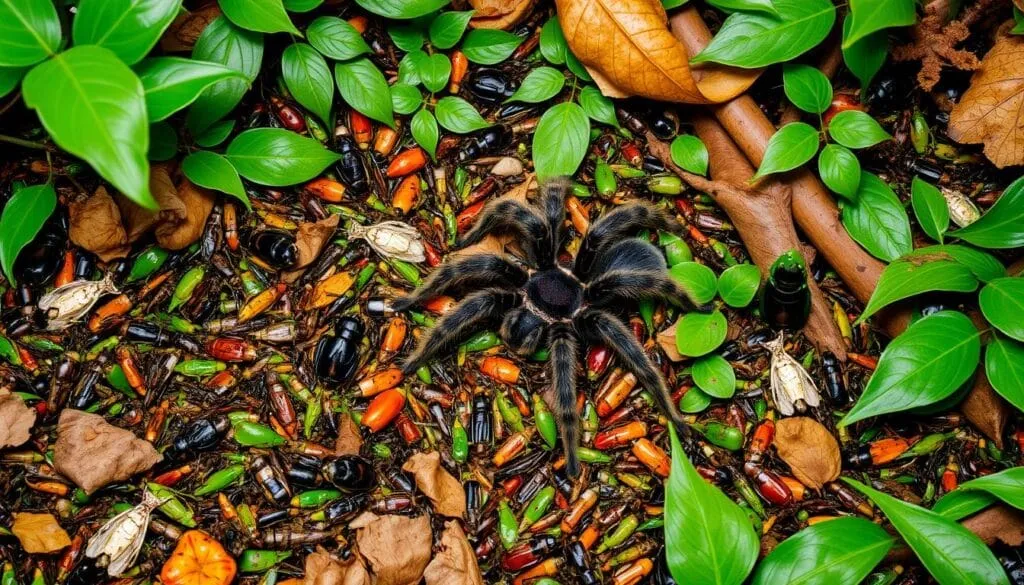
- Pros: Highly nutritious, good protein-to-fat ratio, less noisy than crickets, less likely to escape.
- Cons: Can be more expensive than crickets or mealworms, require some setup if you intend to breed them, may be difficult to find depending on your location.
Waxworms A Treat for Your Tarantula
Waxworms are a high-fat treat that tarantulas enjoy. They should not be used as the primary food source due to their high-fat content. Feeding too many waxworms can lead to obesity and potentially harm the tarantula. They can be used occasionally as a treat to provide variety and stimulate hunting behavior. Waxworms should be offered sparingly, perhaps once or twice a month, and only to adult tarantulas. Juvenile tarantulas should rarely, if ever, be fed waxworms. Like other feeders, you should make sure the waxworms are of good quality before feeding them to your pet.
It’s important to balance treats like waxworms with more nutritious food items. When selecting waxworms, look for plump, healthy-looking larvae. Avoid any waxworms that appear discolored or unhealthy. Always remove any uneaten waxworms from the enclosure. Due to their high-fat content, waxworms can cause digestive issues if consumed in large amounts or on a regular basis. Make sure to offer a varied diet with more protein-rich sources as the cornerstone of the tarantula’s nutrition.
Pros and Cons of Feeding Waxworms
- Pros: Appealing to tarantulas, provide variety, stimulate hunting behavior.
- Cons: High in fat, should only be offered sparingly, can lead to obesity, not a nutritionally complete food source.
Other Food Options for Tarantulas
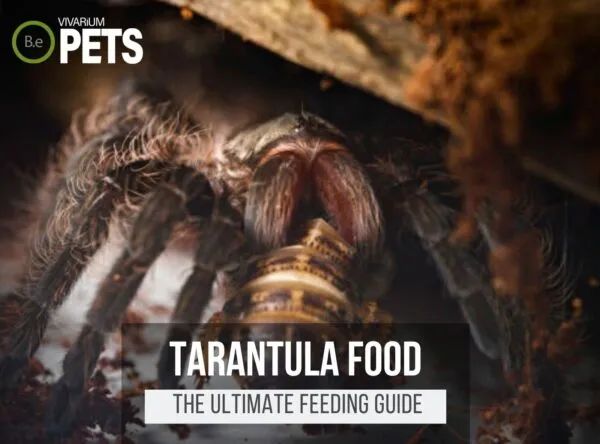
Besides the main food choices, other options can be part of your tarantula’s diet, depending on availability and your tarantula’s size. Pinky mice, baby mice, can be offered to larger tarantulas, but these should also be offered sparingly. It’s also important to pre-kill pinky mice before feeding them to the tarantula, preventing any harm. Some keepers also offer small lizards or other insects, especially to larger species. Always ensure any food item you choose is safe, appropriately sized, and free from pesticides or other contaminants. The key is to offer a variety of food to keep your tarantula healthy and engaged. Always observe your tarantula’s feeding habits to adjust their diet and ensure they’re getting the nutrients they need.
Feeding Frequency How Often to Feed Your Tarantula
The frequency of feeding depends largely on the tarantula’s age and size. Spiderlings (young tarantulas) typically require more frequent feeding, often several times a week, as they are in their growth phase. As the tarantula matures, the feeding frequency should be adjusted accordingly. Sub-adults and adults can be fed once or twice a week, or even less frequently. Observing your tarantula’s abdomen is a good indicator of its feeding needs. A plump abdomen suggests it has recently eaten and doesn’t require food. If the abdomen appears thin or wrinkled, it might be hungry. Remove any uneaten food within 24 hours to avoid stress and prevent the growth of unwanted microorganisms. It’s also important to avoid overfeeding, as this can lead to health problems.
Some tarantula keepers feed their tarantulas until they refuse to eat, but that can vary based on the individual spider. If the tarantula remains uninterested in food, you can wait a week or two before trying again, especially if it is close to molting. During the molting process, tarantulas usually stop eating. Always ensure the food item is appropriately sized. Smaller meals provided more often can be beneficial. Adapt the feeding schedule to the individual tarantula’s needs and preferences.
Hydration The Importance of Water for Tarantulas
Water is essential for tarantulas. They need a constant supply of fresh water to survive and thrive. Always provide a shallow water dish, or a water source that the tarantula can easily access without risk of drowning. For spiderlings, a water source is typically provided in the form of damp cotton balls or a small, shallow water dish. Clean the water dish regularly and refill it with fresh, dechlorinated water to prevent bacteria buildup. The tarantula will drink water to help with molting and maintaining a good metabolic balance. Dehydration can be fatal for tarantulas.
Regular misting of the enclosure is another way to ensure your tarantula stays hydrated, especially for species that prefer higher humidity levels. Just be sure that you don’t over-mist, and the substrate is not soggy. Place the water dish in a location where it won’t be contaminated by substrate. The right humidity level is key, so make sure the enclosure is appropriately humid for the species you are keeping. Proper hydration is often underestimated but is just as important as nutrition.
Conclusion Providing a Balanced Tarantula Diet
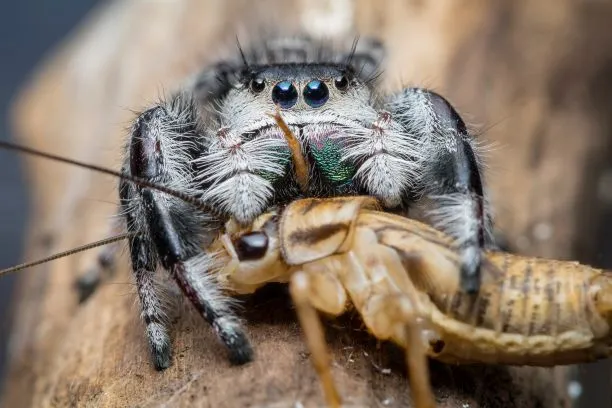
Feeding your tarantula a proper diet is a vital aspect of its care and overall well-being. By understanding the nutritional needs of tarantulas and offering a variety of appropriate food items, you can ensure your pet lives a long, healthy, and happy life. Choose from the top food options—crickets, mealworms, cockroaches, and waxworms (as a treat)—and adjust feeding frequency based on your tarantula’s age and size. Always prioritize providing fresh water and maintaining appropriate humidity levels. By implementing these practices, you’ll create a thriving environment for your eight-legged friend and enjoy the fascinating experience of tarantula ownership. Remember to consistently monitor your tarantula’s feeding habits and adjust the diet as necessary to keep your tarantula healthy and thriving.
